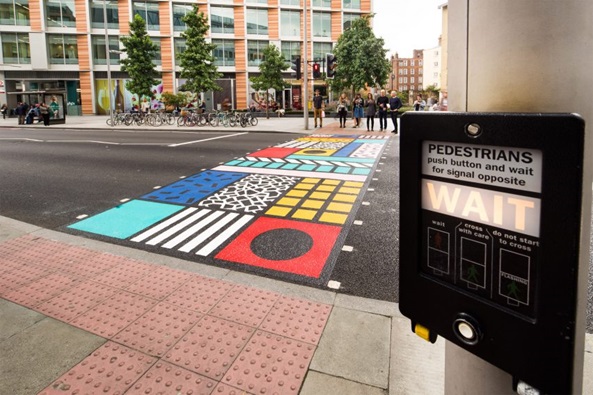Child-friendly neighbourhoods



Colourful crossings, UK

Summary
In recent years, pedestrian crossings in cities around the world have been transformed with colourful or unusual designs to improve road safety, create street arts and celebrate special events. Thus, this type of interventions can allow people to engage in a social gatherings, as well as to improve road safety.
Context
Zebra crossings, which traditionally resemble the coat of a zebra (alternating dark and light stripes) on the road surface, are used in many places around the world to give right of way to pedestrians. However, in recent years in many places around the world, some of these crossings have been transformed with colourful street arts by professional artists as well as by local communities. Unusual designs, which vary from rainbows and piano keyboards to French fries and professional arts, are being used to transform the traditional design of the crossings, to promote safer road crossings and to show how common infrastructure elements in a city can be transformed.
Transformational measures and activities
An artist, Camille Walala, was commissioned by Better Bankside and Transport for London to create a design for the second ‘Colourful Crossing’ for Southwark Street in London, UK. The artist transformed the crossing with unique bold colours and shapes as shown in the figure below. This type of interventions can lead to improving safety by catching the attention of drivers in a particular region of the street, such as near a school, and can also help to engage more people, including children, to use a dedicated crossing when they cross the road. This is a particular issue in L/MICs where safe practices are not being applied or followed by the pedestrian, hence, an intervention such as a colourful crossing could make a difference.

An example of a colourful crossing (source: dezeen.com)
Results
An evaluation of the first colourful crossing project in 2015 found that nearly 70% people felt happier as a result of the creative project, and 85% wanted to see more creative projects along Southwark Street. As a result, the local authority commissioned the second colourful crossing in 2016.
 |
 |
Challenges, opportunities and transferability
This type of bottom-up initiatives can be applied in different cities, but the relevant authorities can be bureaucratic and inflexible, which can be a challenge. On the other hand, colourful crossings could be one of the easy ways to catch the attention of drivers and to improve the safety of crossing pedestrians, with schools being a potential implementation site of particular interest.
In depth
- The Guardian [Accessed 4 January 2019].
- dezeen [Accessed 4 January 2019].